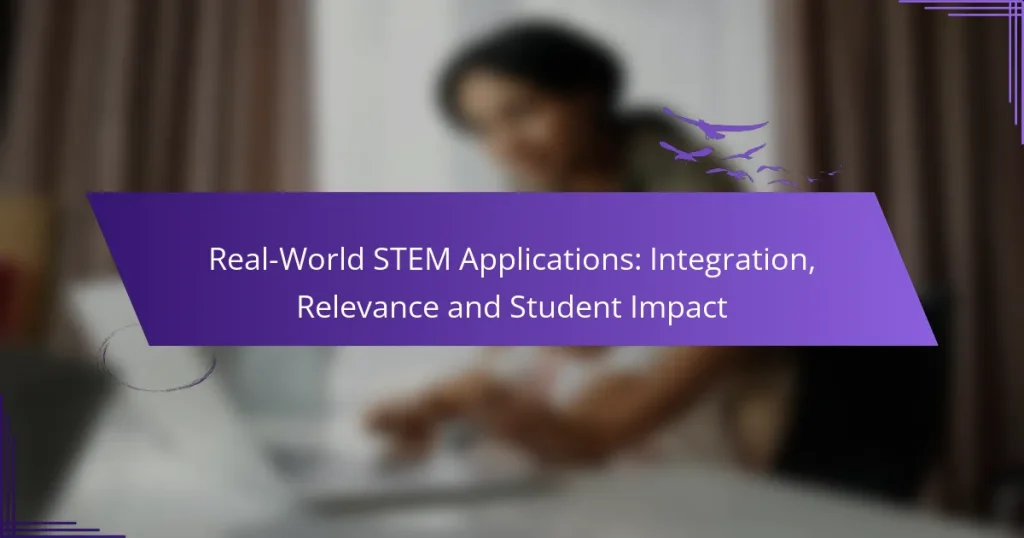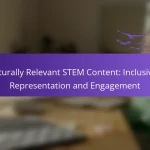Real-world STEM applications play a vital role in enhancing student learning by bridging the gap between theoretical concepts and practical experiences. By integrating relevant scenarios into the curriculum, students not only grasp the significance of their studies but also acquire essential skills that prepare them for future careers in various industries.
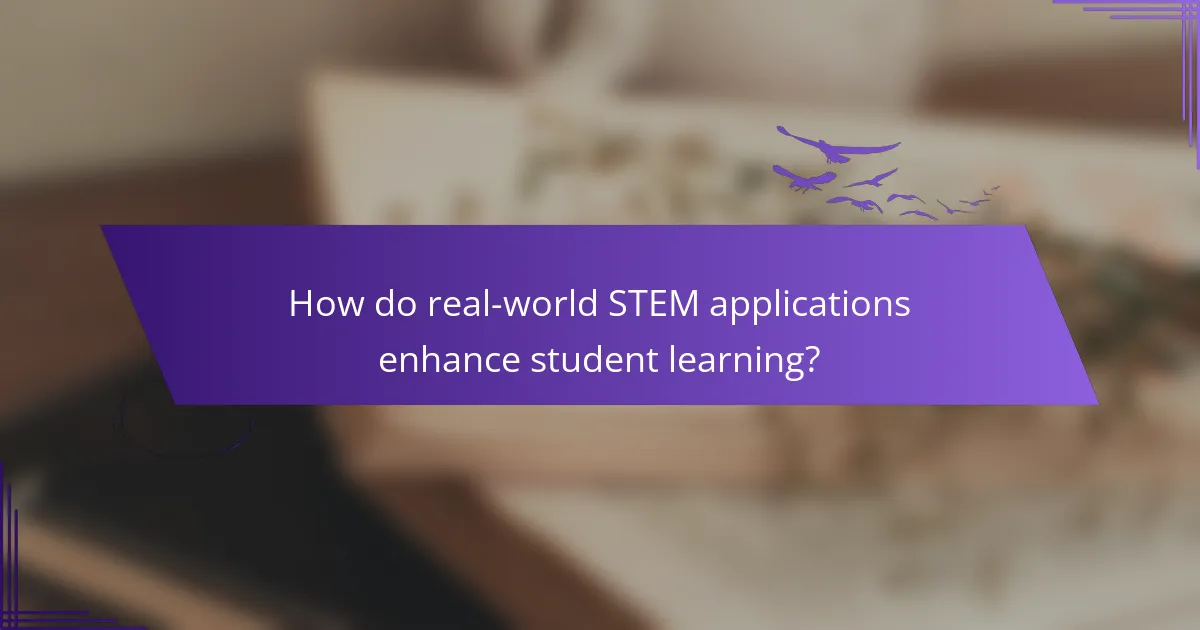
How do real-world STEM applications enhance student learning?
Real-world STEM applications significantly enhance student learning by making concepts more relatable and engaging. By connecting theoretical knowledge to practical scenarios, students can better understand the relevance of their studies and develop essential skills for their future careers.
Hands-on projects
Hands-on projects allow students to apply theoretical knowledge in practical settings, fostering deeper understanding. For example, building a simple robot or conducting a chemistry experiment helps students see the real-world implications of their studies. These projects can range from individual assignments to larger group endeavors, encouraging creativity and innovation.
When designing hands-on projects, consider the resources available and the complexity of the task. Start with manageable projects that can be completed within a few weeks to maintain student engagement and motivation.
Collaborative learning
Collaborative learning encourages students to work together, sharing ideas and perspectives to solve problems. This approach not only enhances understanding but also builds communication and teamwork skills, which are vital in STEM fields. Group projects, peer reviews, and study groups are effective methods to foster collaboration.
To maximize the benefits of collaborative learning, establish clear roles within groups and set specific goals. This structure helps ensure that all students contribute and learn from each other, enhancing the overall learning experience.
Problem-solving skills
Real-world STEM applications cultivate problem-solving skills by presenting students with complex challenges that require critical thinking. Engaging students in real-life scenarios, such as environmental issues or engineering design challenges, encourages them to analyze problems and devise effective solutions. This skill set is essential for success in any STEM career.
Encourage students to approach problems systematically by breaking them down into smaller, manageable parts. This method not only simplifies the problem-solving process but also helps students develop resilience and adaptability when faced with obstacles.
Industry partnerships
Industry partnerships provide students with exposure to real-world applications of STEM concepts. Collaborating with local businesses or organizations can lead to internships, mentorships, and project sponsorships, enriching the educational experience. These partnerships often help students understand the skills and knowledge required in the workforce.
To establish effective industry partnerships, educators should reach out to local companies and organizations that align with their curriculum. Building relationships can lead to valuable resources, guest speakers, and opportunities for students to engage in meaningful projects.
Interdisciplinary approaches
Interdisciplinary approaches integrate multiple subjects, allowing students to see the connections between different fields of study. For instance, a project that combines biology, technology, and environmental science can provide a comprehensive understanding of ecological issues. This method encourages holistic thinking and prepares students for the complexities of real-world problems.
When implementing interdisciplinary projects, ensure that the objectives from each subject area are clearly defined. This clarity helps students understand the relevance of each discipline and how they work together to address complex challenges.
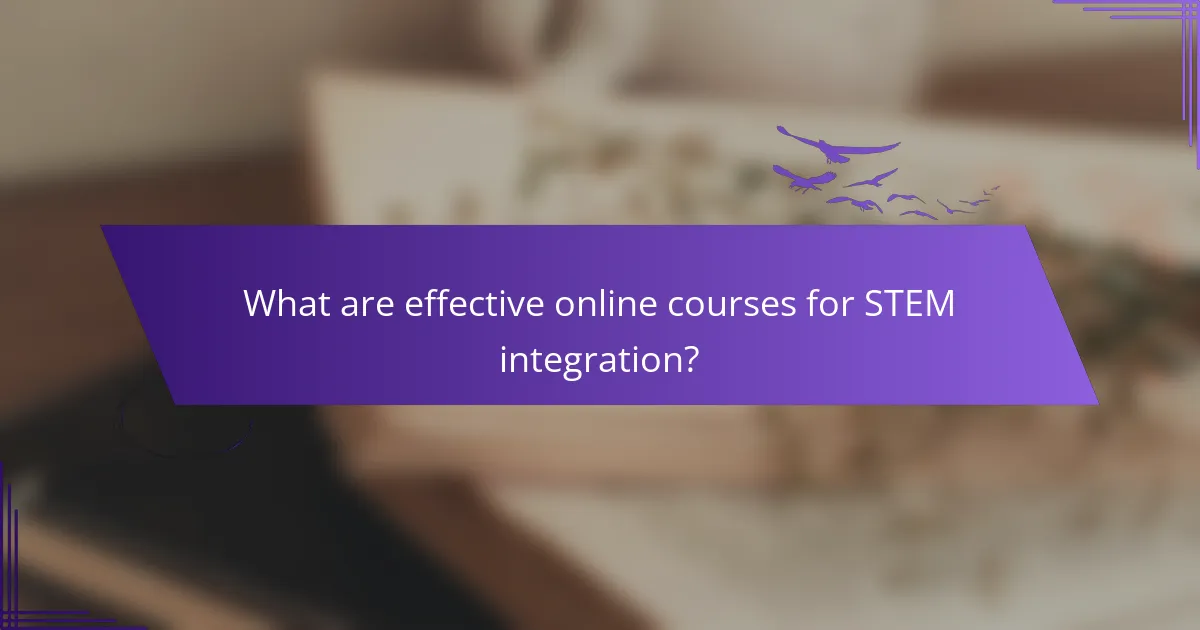
What are effective online courses for STEM integration?
Effective online courses for STEM integration combine theoretical knowledge with practical applications, enhancing student engagement and understanding. These courses often utilize interactive elements and real-world projects to connect concepts with industry needs.
Coursera STEM courses
Coursera offers a wide range of STEM courses from top universities and organizations, focusing on various fields such as data science, engineering, and computer science. Courses often include video lectures, quizzes, and peer-reviewed assignments, allowing students to learn at their own pace.
When selecting a course, consider the course ratings, duration, and whether it offers a certificate upon completion. Popular options include the “Data Science Specialization” from Johns Hopkins University and “Machine Learning” by Stanford University.
edX project-based learning
edX emphasizes project-based learning, where students apply their knowledge to real-world problems. This approach helps reinforce concepts and develop critical thinking skills. Many courses are designed in collaboration with industry leaders, ensuring relevance to current job markets.
Look for courses that include hands-on projects, such as the “MicroMasters in Artificial Intelligence” from Columbia University, which allows learners to build practical skills while earning credentials recognized by employers.
Udacity industry-focused programs
Udacity specializes in industry-focused programs known as Nanodegrees, which are designed in partnership with leading companies. These programs typically cover in-demand skills such as programming, data analysis, and artificial intelligence.
Students benefit from personalized feedback and mentorship, making it easier to navigate complex topics. Consider programs like “Data Scientist Nanodegree” or “AI Programming with Python” for a structured learning path that aligns with industry needs.
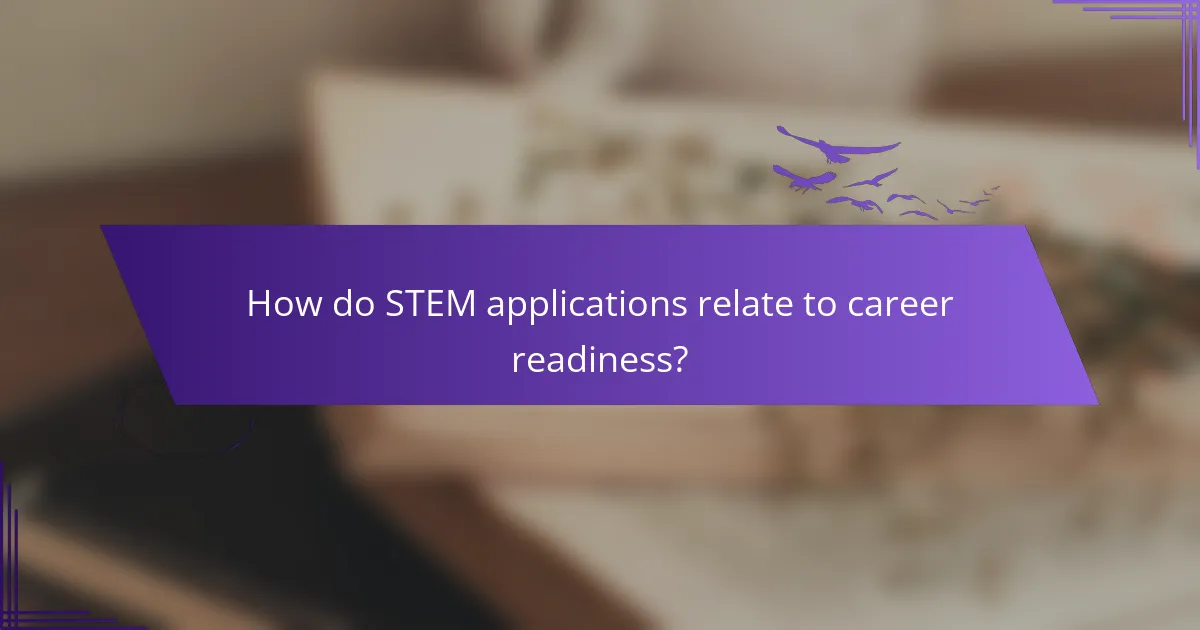
How do STEM applications relate to career readiness?
STEM applications are crucial for career readiness as they equip students with practical skills and knowledge relevant to various industries. By integrating real-world problems into the curriculum, students become better prepared for the demands of the workforce.
Real-world skills development
Real-world skills development in STEM focuses on teaching students how to apply theoretical knowledge to practical situations. This includes problem-solving, critical thinking, and technical skills that are directly applicable in the workplace. For instance, students might engage in projects that require coding, data analysis, or engineering design, which are essential in many modern careers.
Additionally, hands-on experiences, such as lab work or field studies, help students gain confidence and competence in their abilities. These skills are often highlighted by employers as key competencies for job candidates.
Internship opportunities
Internship opportunities provide students with invaluable experience in real-world settings, allowing them to apply their STEM knowledge while gaining insights into industry practices. Many educational institutions partner with local businesses to offer internships, which can range from a few weeks to several months.
These internships not only enhance students’ resumes but also allow them to build a professional network and gain references that can be beneficial when seeking full-time employment. Students are encouraged to seek internships that align with their career interests to maximize their learning experience.
Networking with professionals
Networking with professionals is an essential aspect of career readiness in STEM fields. Engaging with industry experts through workshops, seminars, and conferences allows students to learn about current trends and opportunities. This interaction can lead to mentorship, job shadowing, or even job offers.
Students should actively participate in professional organizations related to their field of study, as these groups often provide resources for networking and career development. Building a strong professional network can significantly enhance job prospects and career growth in STEM disciplines.
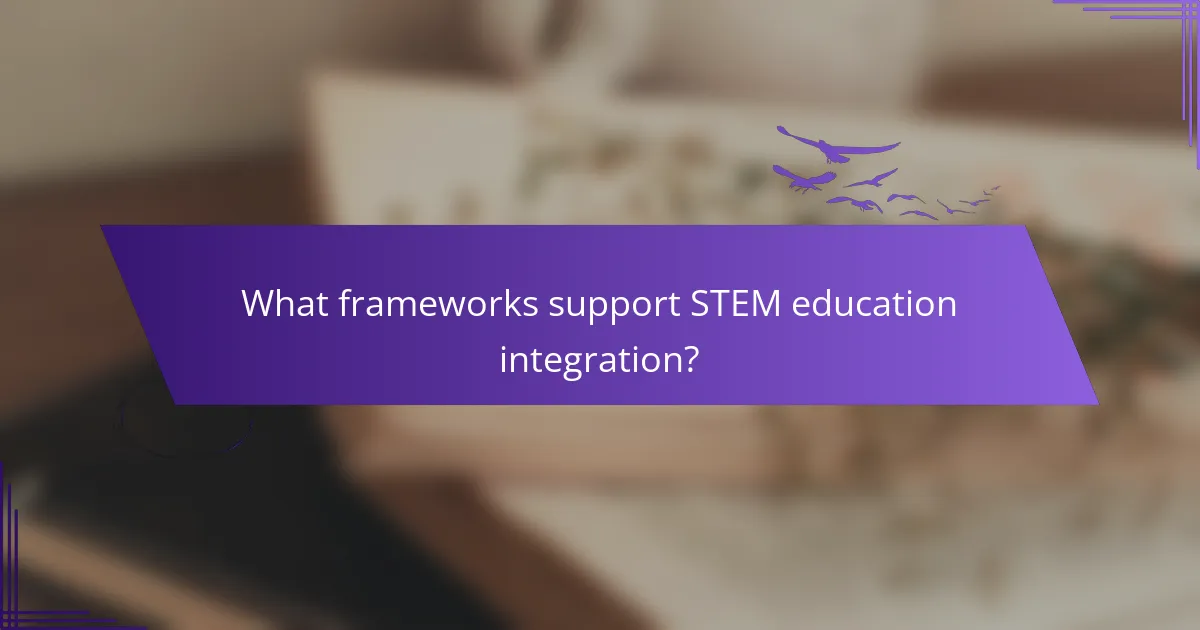
What frameworks support STEM education integration?
Several frameworks support the integration of STEM education, emphasizing collaboration, real-world applications, and interdisciplinary learning. These frameworks guide educators in creating cohesive and relevant curricula that engage students and enhance their problem-solving skills.
NGSS standards
The Next Generation Science Standards (NGSS) provide a comprehensive framework for K-12 science education, focusing on three dimensions: scientific and engineering practices, crosscutting concepts, and disciplinary core ideas. By aligning STEM curricula with NGSS, educators can ensure that students develop critical thinking and analytical skills through hands-on experiences.
For effective implementation, teachers should integrate these standards into lesson planning, emphasizing inquiry-based learning and real-world problem-solving. This approach not only meets educational benchmarks but also prepares students for future challenges in science and technology.
STEM teaching practices
Effective STEM teaching practices include project-based learning, collaborative group work, and the use of technology to enhance engagement. These methods encourage students to explore complex problems and develop solutions in a supportive environment, fostering teamwork and communication skills.
To maximize impact, educators should focus on creating a classroom culture that values experimentation and resilience. Incorporating real-world scenarios and challenges can help students see the relevance of their learning, making it more meaningful and applicable to their lives.
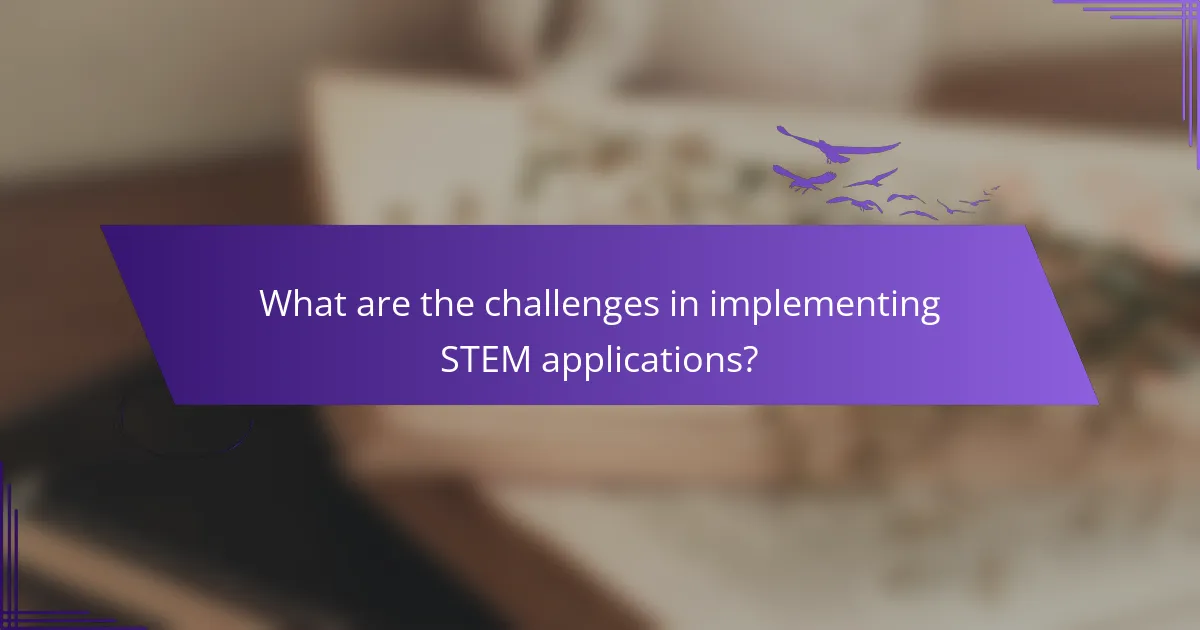
What are the challenges in implementing STEM applications?
Implementing STEM applications in education faces several challenges that can hinder their effectiveness. Key issues include resource limitations, curriculum alignment, and teacher training needs, each of which plays a critical role in successful integration.
Resource limitations
Resource limitations can significantly impact the implementation of STEM applications. Schools often struggle with inadequate funding for technology, materials, and facilities necessary for hands-on learning experiences. For example, a lack of access to modern lab equipment or software can restrict students’ ability to engage in practical experiments.
To address resource limitations, schools can seek partnerships with local businesses or organizations that may provide funding or materials. Additionally, leveraging community resources, such as libraries or science centers, can enhance STEM learning opportunities without substantial financial investment.
Curriculum alignment
Curriculum alignment is essential for integrating STEM applications effectively. If STEM activities do not align with existing educational standards or learning objectives, they may not be prioritized in the classroom. This misalignment can lead to fragmented learning experiences that fail to connect with students’ overall educational goals.
To ensure alignment, educators should review state or national standards and design STEM activities that complement core subjects. Creating interdisciplinary projects that incorporate math, science, and technology can help reinforce concepts while meeting curriculum requirements.
Teacher training needs
Teacher training needs are a critical factor in the successful implementation of STEM applications. Many educators may lack the necessary skills or confidence to teach STEM subjects effectively, particularly in areas involving new technologies or methodologies. Ongoing professional development is essential to equip teachers with the tools they need.
Schools should invest in targeted training programs that focus on both content knowledge and pedagogical strategies for teaching STEM. Collaborating with universities or educational organizations can provide teachers with access to workshops, resources, and mentorship opportunities that enhance their teaching practices.
